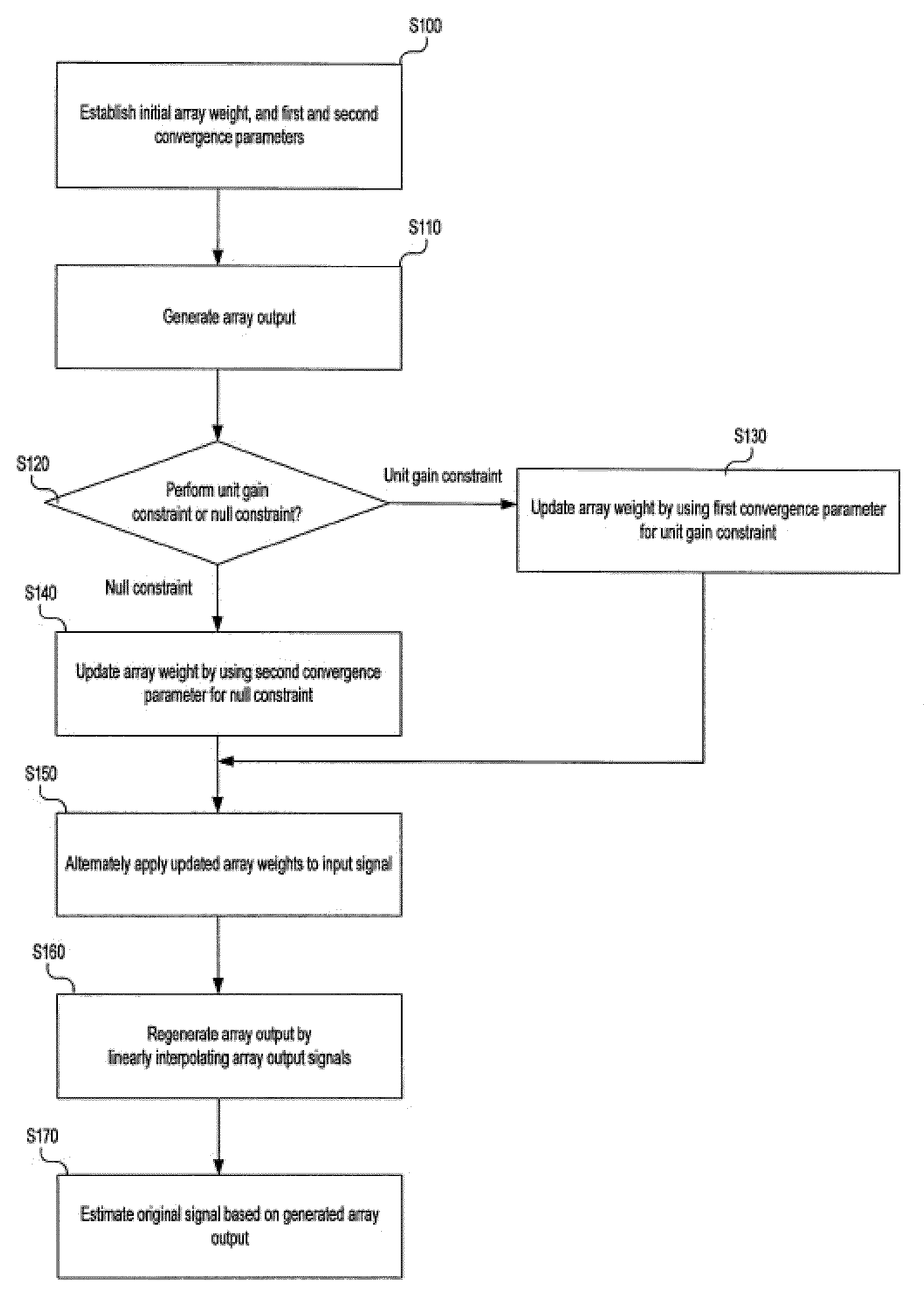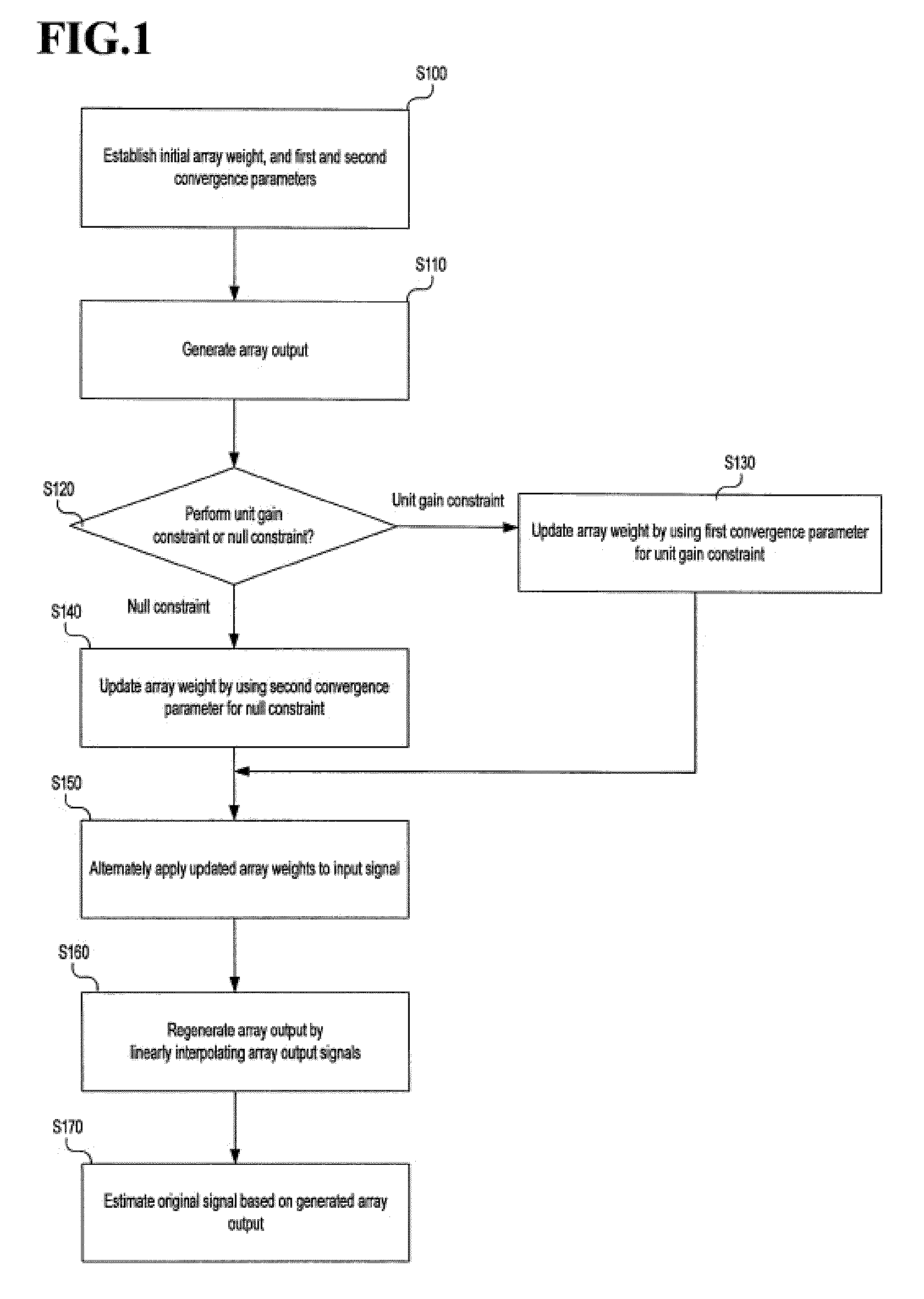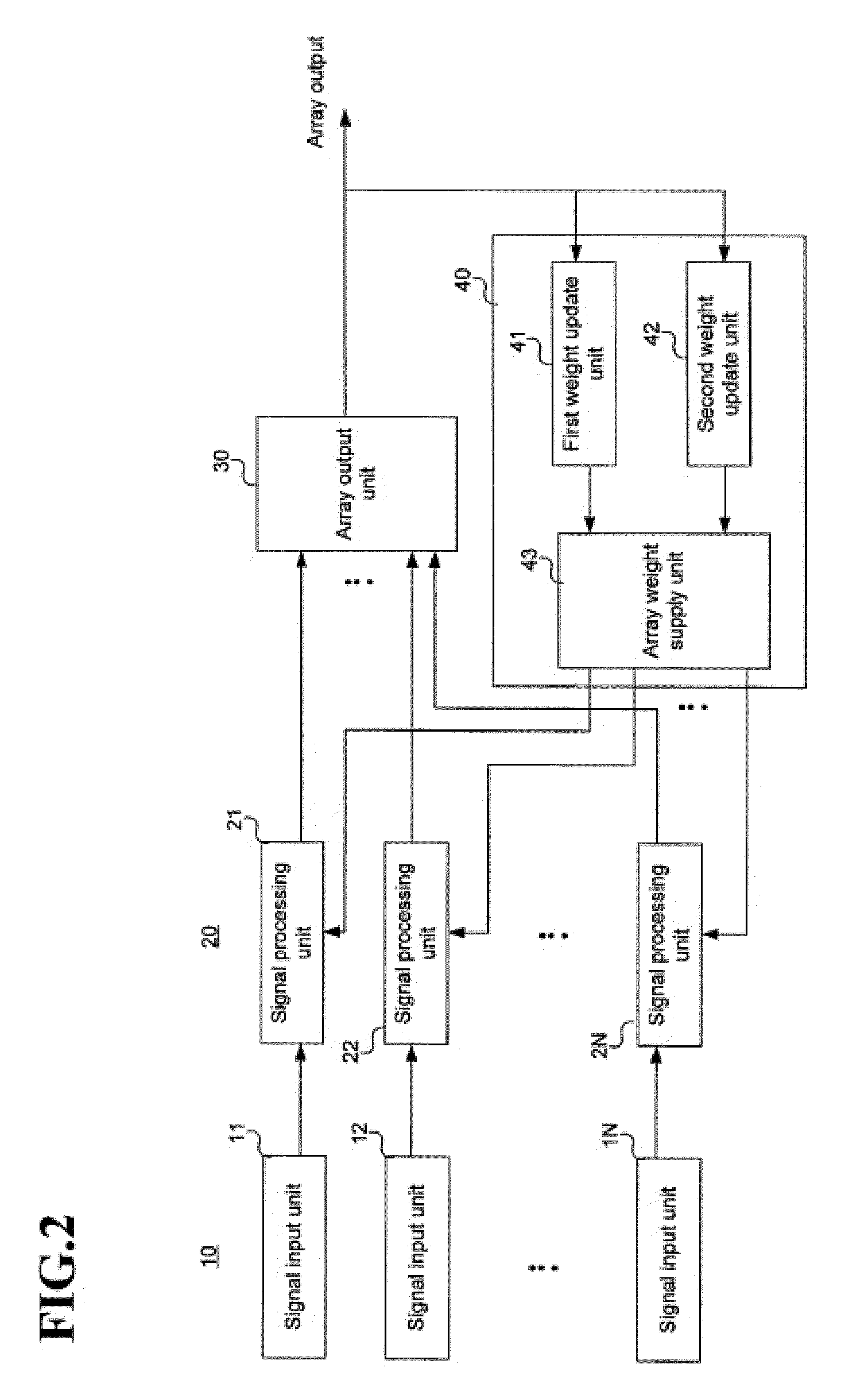Interference eliminating method in adaptive array system and array processing device
an array processing device and array processing technology, applied in the field of eliminating interference, can solve the problems of large number of computations required to generate the array output, difficulty in estimating the original signal, and inability to estimate the original signal, etc., and achieve the effect of removing interference of signals inpu
- Summary
- Abstract
- Description
- Claims
- Application Information
AI Technical Summary
Benefits of technology
Problems solved by technology
Method used
Image
Examples
Embodiment Construction
[0033]In the following detailed description, only certain exemplary embodiments of the present invention have been shown and described, simply by way of illustration. As those skilled in the art would realize, the described embodiments may be modified in various different ways, all without departing from the spirit or scope of the present invention. Accordingly, the drawings and description are to be regarded as illustrative in nature and not restrictive. Like reference numerals designate like elements throughout the specification.
[0034]In an exemplary embodiment of the present invention, an alternate mainbeam nulling (AMN) algorithm is used to efficiently eliminate an interference signal in an adaptive array system.
[0035]In the AMN algorithm, in addition to a unit gain constraint used in a linearly constrained least mean square (LMS) algorithm, since a null constraint is applied in a set direction (here, the set direction may be a look direction, i.e., a direction for estimating an...
PUM
 Login to View More
Login to View More Abstract
Description
Claims
Application Information
 Login to View More
Login to View More - R&D
- Intellectual Property
- Life Sciences
- Materials
- Tech Scout
- Unparalleled Data Quality
- Higher Quality Content
- 60% Fewer Hallucinations
Browse by: Latest US Patents, China's latest patents, Technical Efficacy Thesaurus, Application Domain, Technology Topic, Popular Technical Reports.
© 2025 PatSnap. All rights reserved.Legal|Privacy policy|Modern Slavery Act Transparency Statement|Sitemap|About US| Contact US: help@patsnap.com



